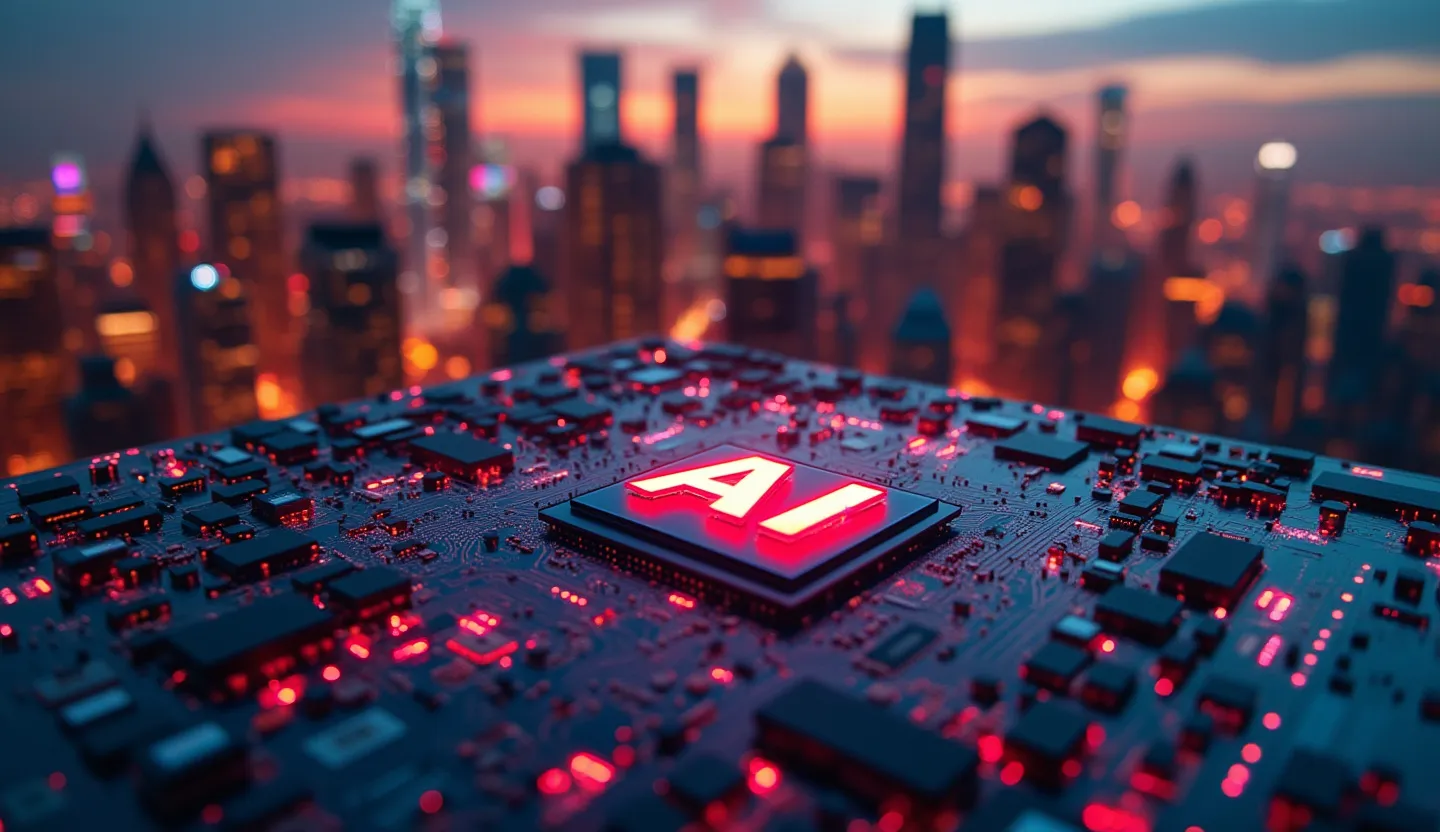Navigating the Crossroads: AMD’s Sector Role and Recent Volatility
In today’s regular trading session, Advanced Micro Devices (AMD) commands attention as one of the most active and volatile names in the semiconductor sector. Known for its aggressive push into data center chips, AI accelerators, and high-performance computing, AMD’s diversified approach has kept it front and center in a market gripped by the promise of artificial intelligence and cloud computing. Yet, with a notable -2.55% drop intraday and fresh volume surging above 27 million shares, AMD’s selloff punctuates a day of mixed sentiment—one shaped by major business developments and competitive pressures.
Key Takeaways
Intraday Drop: AMD down -2.55% to $114.18, with volume at 27,498,784 shares—well above average.
Strategic Deal: Announced sale of ZT Systems’ server-manufacturing business for $3 billion, signaling a shift in operational focus.
AI Expansion: Cirrascale Cloud Services will offer next-gen AMD Instinct™ MI350 Series GPUs in its AI Innovation Cloud.
Shareholder Moves: Recent buyback headlines underscore AMD’s commitment to capital return, even as the stock faces volatility.
Strategic Moves and Market Response
AMD’s Business Model Evolution
AMD’s relentless push into the data center and AI markets has made it a linchpin in the high-growth semiconductor sector. The company’s x86 CPUs compete directly with Intel, while its Instinct GPU line is pitched as a rival to NVIDIA in the burgeoning AI training and inference arena. Today, AMD’s business model is increasingly defined by:
High-performance computing (HPC) and AI accelerator chips
Embedded solutions for edge and automotive applications
Consumer and gaming graphics cards
This diversification has helped AMD weather cyclical swings in PC demand, but the core narrative is now firmly anchored in AI and next-gen server technology.
Sale of ZT Systems’ Server-Manufacturing Business: Strategic Realignment
The morning’s headline—AMD’s $3 billion sale of ZT Systems’ server-manufacturing business—marks a significant strategic pivot. According to TechCrunch:
"Semiconductor giant AMD followed through with its plan to spin out ZT Systems' server-manufacturing business."
This move allows AMD to sharpen its focus on high-margin, IP-driven segments (AI accelerators, chip design) rather than lower-margin hardware manufacturing. Investors often reward such capital allocation decisions, though the market’s immediate response hints at lingering uncertainty over execution and competitive positioning.
AI Expansion: New Partnerships, New Horizons
In tandem, AMD announced that Cirrascale Cloud Services will integrate the next-generation Instinct MI350 Series GPUs into its AI Innovation Cloud platform. As GlobeNewsWire notes:
"Next generation AMD GPUs and platforms deliver high-performance AI and more efficient inference to accelerate innovation at scale."
This partnership underscores AMD’s strategy of leveraging hyperscale and cloud partners to drive adoption of its AI hardware, directly confronting NVIDIA’s current dominance in GPU-powered AI infrastructure.
Buybacks and Capital Return
MarketBeat cited AMD as one of several large-cap stocks embracing substantial buybacks, a move designed to boost shareholder value and signal management’s confidence in the long-term outlook. While buybacks can provide a floor for share prices, they also raise expectations for sustained growth and margin expansion—a tall order in such a competitive space.
Price Action and Sentiment: Parsing the Decline
Volatility in Context
Despite positive strategic headlines, AMD is underperforming the sector today, falling -2.55% and trading below its previous close of $117.17. The elevated volume (nearly 28 million shares) suggests institutional repositioning—possibly profit-taking following a run-up, or skepticism regarding the ZT Systems deal’s immediate benefits.
Historical Performance Overview
Metric | Value |
|---|---|
Previous Close | $117.17 |
Current Price | $114.18 |
Intraday Change | -2.55% |
Volume | 27,498,784 |
AMD has exhibited strong momentum in the past year, riding the AI and data center wave. However, today’s drop is the sharpest in recent sessions, and should be viewed in the context of the broader sector’s rotation and profit-taking.
Analyst and Market Sentiment: A Mixed Picture
Wall Street’s view on AMD remains broadly positive, with consensus price targets typically above current levels, reflecting expectations for AI-driven revenue growth and successful product launches. However, intraday weakness signals that near-term concerns—execution risk, potential margin compression, and sector rotation—are top of mind for traders.
No major analyst downgrades have surfaced today, but the market is digesting both the ZT Systems divestiture and the Cirrascale partnership. The lack of an immediate rally post-announcement indicates that while strategic moves are recognized, investors want to see tangible revenue and margin improvement before re-rating the stock higher.
Macro and Sector Backdrop
The semiconductor sector remains in flux, with AI demand providing a long-term tailwind but short-term sentiment vulnerable to cyclical swings and news flow. AMD’s moves—particularly the ZT Systems sale—reflect an industry-wide focus on shedding non-core assets and doubling down on R&D and high-margin segments.
"Several large-cap stocks recently announced buybacks worth billions, boosting their ability to return capital to shareholders. However, these names also have other important recent developments surrounding them that have big implications for shareholders." — MarketBeat
Conclusion: AMD’s Defining Moment
Today, AMD finds itself at a pivotal inflection point. While its strategic moves—selling a manufacturing unit and deepening AI partnerships—signal long-term vision, the market’s reaction is a reminder that execution and competitive realities matter. Investors should watch for:
Continued traction in AI and data center segments
Integration and financial impact of the ZT Systems sale
Updates on buyback activity and capital allocation
AMD’s sector leadership in innovation is undisputed, but the path forward demands both flawless execution and clear communication with stakeholders. Today’s volatility is less a red flag than a signal to dig deeper into the company’s evolving fundamentals and sector role.

.svg)
.svg)
.svg)
.svg)

.svg)

.svg)
















